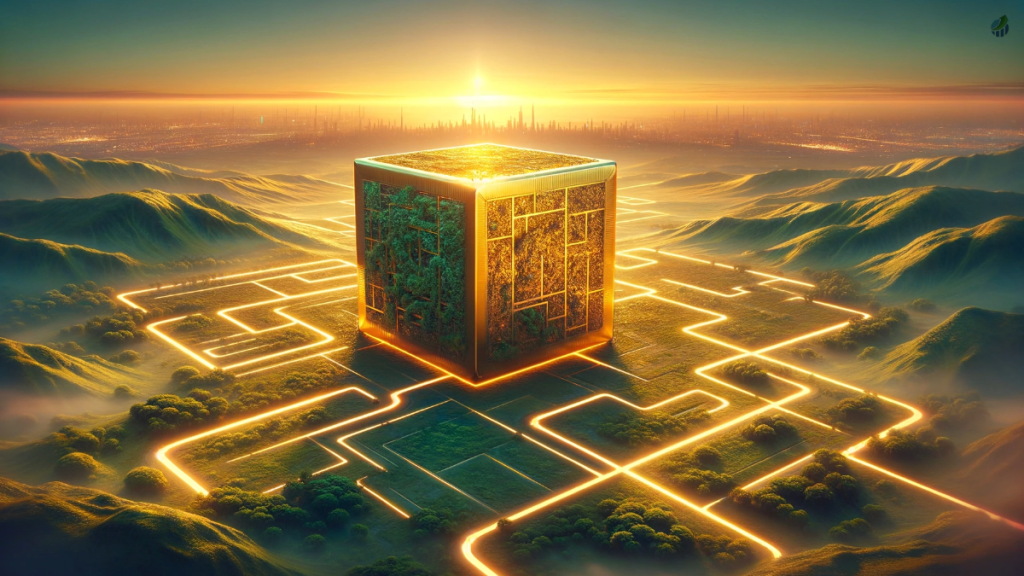In the bustling capital of Riyadh, Saudi Arabia, a colossal cityscape is emerging a testament to human ingenuity and visionary urban planning. The Mukaab, derived from the Arabic word for “cube”, stands poised as the epicenter of the expansive New Murabba project, redefining urban living on an extraordinary scale.
Rising to a breathtaking height of 1,312 feet and sprawling across 4,695 acres, The Mukaab isn’t just another addition to the skyline; it’s a testament to the boundless possibilities of architectural brilliance. Its towering silhouette encompasses a diverse blend of residences, hotels, office spaces, and verdant open-air parks interconnected by futuristic walkways, all harmonizing to create a living, breathing ecosystem.
Yet, The Mukaab’s allure extends beyond its sheer size. It embodies a realm where architecture transcends the ordinary, where every structure is a fusion of form and function, redefining the norms of modern design. The central tower, a mesmerizing testament to this vision, stands as an iconic edifice, drawing inspiration from space pods and serving as the nucleus of this indoor metropolis.
But what truly sets The Mukaab apart is its promise of experiences that defy repetition. Here, monotony is banished, and each day unfolds as a new chapter in a saga of innovation and discovery. The city’s holographic projections transport inhabitants and visitors alike to realms where towering figures walk among regular-sized buildings, offering an immersive journey into futuristic vistas.
Transportation takes a quantum leap forward within The Mukaab, featuring racetracks specially designed for flying cars. This bold foray into autonomous aerial vehicles cements its status as a trailblazer in pioneering mobility solutions, heralding a future unbound by conventional limitations.
Financed by the Saudi sovereign wealth fund, the Public Investment Fund, The Mukaab’s monumental endeavor isn’t merely a feat of engineering; it’s an economic catalyst. Projections estimate a revenue of 180 billion riyals ($48 billion USD) and the creation of hundreds of thousands of jobs, heralding a new economic era less reliant on traditional oil revenues.
Saudi Arabia’s Vision 2030
This awe-inspiring project aligns seamlessly with Saudi Arabia’s Vision 2030, a visionary blueprint aimed at transforming the nation and its economy. It is a strategic framework to reduce the country’s dependence on oil, diversify its economy, and develop public service sectors such as health, education, infrastructure, recreation, and tourism. At the heart of Vision 2030 is a plan to transform not just the economic landscape but also to foster a progressive societal change. Here’s an outline of some of its key content:
- Economic Diversification: Vision 2030 aims to broaden Saudi Arabia’s investment base, promoting sectors like mining, renewable energy, and manufacturing, to create new employment opportunities.
- Public Investment Fund (PIF): The PIF is set to become a global investment powerhouse, underpinning economic diversification and investing in strategic sectors both domestically and internationally.
- Private Sector Growth: Vision 2030 emphasizes the role of the private sector in driving economic growth, aiming to increase its contribution to GDP by fostering entrepreneurship and small and medium-sized enterprises (SMEs).
- Technological and Digital Advancement: The plan includes a strong push towards digital transformation, aiming for Saudi Arabia to be an innovative leader in the digital economy.
- Renewable Energy: A commitment to sustainable energy sources, with initiatives like NEOM, is a testament to the Kingdom’s dedication to combating climate change and leading in renewable energy technologies.
- Cultural Revival and Tourism: The vision sees culture and tourism as essential elements, with initiatives to revive Saudi heritage, arts, and culture, alongside the development of tourism sectors such as the Red Sea Project.
- Social Reforms: Vision 2030 also includes significant social reforms, such as increasing women’s participation in the workforce and providing a more inclusive environment for all citizens.
- Healthcare and Education: Investing in healthcare and education, with a focus on technology and innovation, is key to preparing a workforce ready for the jobs of the future.
- International Partnerships: Strengthening international trade and investment ties is a pillar of Vision 2030, seeking to position Saudi Arabia as a pivotal trade hub and partner.
- Quality of Life: Aiming to improve the quality of life for its citizens, Vision 2030 plans to develop vibrant cities with a range of options for cultural and recreational activities.
Vision 2030 is a bold attempt to shape the future of Saudi Arabia, reflecting a shift from an oil-reliant economy to a more diversified and sustainable one, and from a conservative society to a more open and dynamic one. It’s a blueprint for how the Kingdom aspires to transform its social, economic, and cultural fabric by the end of the decade.

Project Considerations
- Feasibility and Practicality: There is skepticism about the project’s practicality, given its colossal scale and the technological advancements it promises. The execution of such a grand vision may face significant challenges, ranging from engineering hurdles to the long-term sustainability of its infrastructure.
- Cultural and Social Integration: Critics argue that while The Mukaab aims to be a global icon, it may not adequately take into account the cultural and social nuances of Saudi Arabia. There are concerns that it might not resonate with the local population or integrate well with the existing urban fabric and traditions.
- Environmental Impact: The ecological footprint of constructing a project of such magnitude is a point of concern. Environmentalists question the impact on the local ecosystem and whether the project’s sustainability measures are sufficient to mitigate the effects of such a large-scale construction.
- Economic Considerations: The economic viability of The Mukaab is another area where critics express doubt. The cost associated with maintaining such a technologically advanced structure may be immense, and its ability to generate a return on investment is unproven.
- Human Rights Issues: There have been international concerns regarding the displacement of local communities and the labor conditions for workers involved in NEOM’s construction. The Mukaab, as part of NEOM, is not immune to these criticisms, which could taint its global image.
Within the heart of New Murabba, The Mukaab could stand as an architectural marvel, where every moment offers a new revelation. Its allure lies not just in its physical grandeur but in the constant evolution of experiences it offers a testament to relentless innovation and imagination.
In The Mukaab, it is alleged that you could marvel at architecture that defies convention and experiences that promise novelty every day. It’s not just a city, it’s a testament to the unwavering human spirit reaching for the stars, inviting the world to witness a future where innovation knows no bounds. However, it will always be judged on the way it is built and run. So the jury is out on that one.
Author Profile

- Ex-community moderator of the Banano memecoin. I have since been involved with numerous cryptocurrencies, NFT projects and DeFi organizations. I write about crypto mainly.
Latest entries
- June 6, 2025NewsWireElon Musk to Decommission SpaceX Dragon after Trump Threat
- December 9, 2024Stock MarketMaster the Time Value of Money Financial Concept
- November 18, 2024Stock MarketFinancial Ratios Guide to Measuring Business Performance
- November 11, 2024NewsWireLabour’s UK Budget: A Fiscal Smirk of Contempt for Working People




